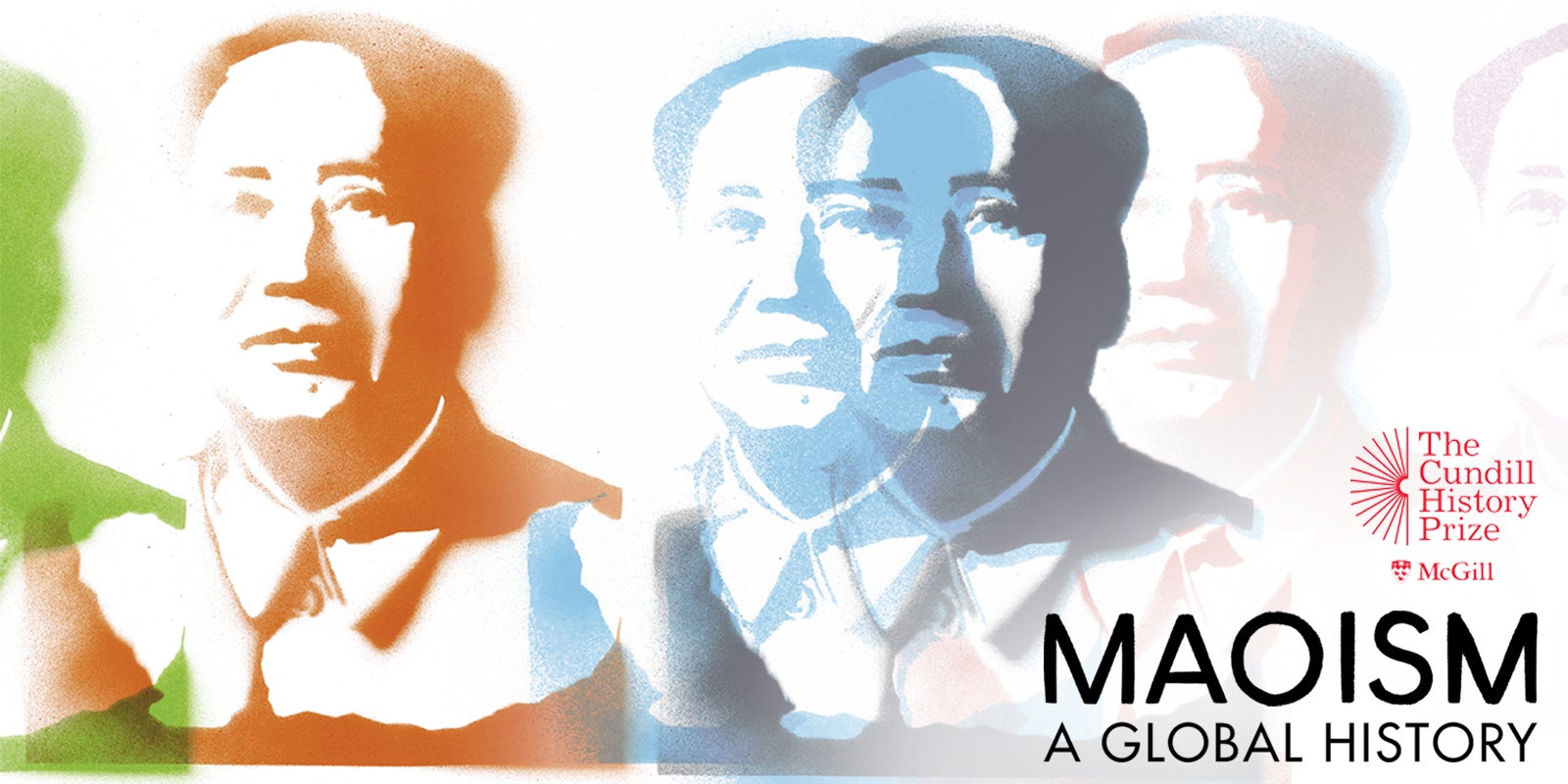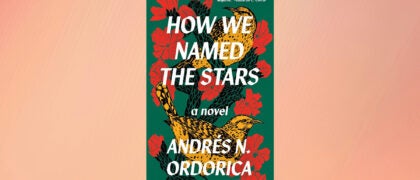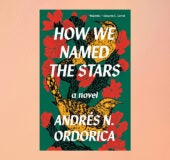UPDATE: Julia Lovell, author of Maoism: A Global History, has been declared the winner of the 2019 Cundill Prize.
Alan Taylor, Chair of the Jury, praised Lovell: “Her book will dazzle readers with lucid and vivid insights into the power of a protean, and often deadly, ideology – and its enduring impact on our world today. Julia Lovell has written an exceptional work of history.”
You can read an excerpt from Maoism in the post below.
Julia Lovell, author of Maoism: A Global History, has been announced as one of three finalists for the Cundill History Prize. The Cundill Prize was established in 2008 by McGill University to recognize and reward the best history writing in English, considering writers of any nationality and from any country.
The winner of the prize will be announced on November 14th at the Cundill History Prize Gala. The prize jurors discuss the importance of Lovell’s work in the video below:
Video provided by the Cundill History Prize.
Read an excerpt from Maoism
Shanghai, 12 April 1927, 4 a.m. A bugle call from the headquarters of the Nationalist Party on Route Ghisi, in the far south of the French concession, was answered by the siren from a gunboat moored on the city’s east side. Members of Shanghai’s most powerful triad, the Green Gang – disguised in blue factory workers’ uniforms, with white armbands – converged on Communist strongholds scattered through the low-rise Chinese quarters of the city. Sunrise was still an hour and a half away when machine-gun fire rattled through the darkness. Every worker who resisted was shot down. Others were lashed together and marched away for execution. A general strike was called for the following day but those who turned out for a protest demonstration were brought down by Nationalist machine-gun fire, rifle butts and bayonets. The protesters had put women and children at the front of the march, assuming that Nationalist troops would not open fire. More than three hundred were killed that day, witnesses reckoned, and a far larger number wounded, some of whom were buried alive with the dead.
Three weeks earlier, Communist prospects in the city had looked very different. In the last ten days of March, Shanghai’s warlord ruler had surrendered the metropolis to a coalition of armed pickets organised by the young Chinese Communist Party (CCP). Strikers had first shut down the city and then – initially armed with only 100 rifles, 250 pistols and 200 hand grenades, plus propaganda leaflets, posters and newspapers – had fought for shipyards, police stations and the railway. The taking of the city was crucial to the uprising launched in 1926 – the so-called Northern Expedition, China’s second revolution in fifteen years – against army strongmen who had carved the country into regional kingdoms.
The 1911 Revolution had brought to an end some 2,000 years of dynastic rule. Within five years, central authority had disintegrated with the rise of ‘warlords’, provincial commanders. The young republic still had a president in the capital Beijing, but his authority over the localities was nominal. Nonetheless, faith in the idea of a unified China persisted. Urban China in particular periodically erupted with discontent at the new status quo, for political paralysis under fragmented military rule made China domestically and internationally vulnerable. On 4 May 1919, patriotic protests in Beijing and Shanghai broke out after China’s warlord rulers agreed at the Versailles Conference to sign away a large slice of north-east China to Japan. By 1923, Sun Yat-sen – the republic’s first, briefly incumbent president (in early 1912) and a man obsessed with the idea of reunifying China – forged an alliance between his Nationalist Party (the Guomindang or GMD) and the Communist Party, all funded, trained and armed by the Soviet Union and its Communist International (Comintern). Sun’s death in 1925 notwithstanding, his successor as Nationalist leader, Chiang Kai-shek, launched the Northern Expedition, a military campaign to reunite the country, the following year. Soviet-trained Chinese troops pushed up from the south, fighting or bribing warlords into submission. The forces were a united front of the conservative GMD and more radical CCP: the GMD controlled the formal, standing army, but everywhere they fought, their task was made easier by striking workers and peasant activists (organised by Communists), who disrupted the communications, materiel and authority of the old regime.
This was an uneasy alliance, however. The aims and power base of the two parties were fundamentally at odds: the GMD had always relied on the moneyed classes for funds, while the Communists were devoted to organising rebellion by China’s urban workers and poor farmers. Chiang Kai-shek, leader of the Nationalists, marched into Shanghai at the end of March 1927 and – behind public reassurances to the labour unions and to Shanghai’s foreigners – made a secret deal with Shanghai’s Green Ganglander-in-chief, Du Yuesheng, to break the city’s Communists. Then, on 11 April, Du invited Wang Shouhua, the Communist leader of the General Labour Union, to a quiet dinner in his French-style villa, where one of Du’s Green Gang underlings strangled him. A few hours later, early on 12 April, Du’s thugs – paid and armed by Chinese and foreign businessmen – eliminated unsuspecting, unprepared Communist strongholds throughout the city.
“More than three hundred were killed that day, witnesses reckoned, and a far larger number wounded, some of whom were buried alive with the dead.”
The massacre of red Shanghai heralded months and years of horrific violence in China against those of proven or suspected Communist sympathies. Some estimate that millions died: disembowelled, decapitated, soaked in petrol and set alight, branded to death with hot irons, tied to trees with grit rubbed into their mutilations. Special efforts were made to brutalise female comrades. Nationalist troops suppressing peasant associations in one province ‘cut open the breasts of the women comrades, pierced their bodies perpendicularly with iron wires and paraded them naked through the streets’.
Of all the lessons learned by the Chinese Communist Party in its history, the one taught by the bloody spring of 1927 left arguably the deepest impression. To stand a chance of survival, the party needed an army. In 1927, Mao Zedong – one of several party leaders who began to endorse violence at the time – turned the moral of the tale into his best-known aphorism, one that subsequently migrated from Chinese propaganda posters to Black Panther flyers, from hand-copied Parisian student rags to Indian jungle-rallies: ‘Political power comes out of the barrel of a gun.’ Eleven years later, he added the crucial refinement: ‘The Party commands the gun, and the gun must never be allowed to command the Party.’ This affection for political violence underpinned the cult that Mao would create over the next half-century. In the context of modern political movements, respect for the power of the gun was not remotely exceptional – indeed, fascism celebrated violence more avidly than Communism. But within Chinese Communism, Mao’s rhetorical intervention was decisive.
In the recriminations that followed the disaster of 1927, Chinese Communists blamed the Comintern for insisting that they keep working with the Nationalists, for forcing upon them a deal that made them the subordinate partner in the united front and that forbade them from forming an independent army. In reality, though, it had not occurred to them that they might need to arm themselves seriously, beyond the local workers’ and farmers’ militias that supported the Nationalists’ standing army. The first seven years of Communism in China – Comintern representatives properly began work in China in 1920 – were dominated by intellectuals and bookworms, who consistently refused to acknowledge the violence inherent in the theory and practice of Communism. Mao too was a bookworm, albeit of peasant origin, but one who cherished violence; so were many of his later global followers.
Communism was just one of the political solutions to China’s ills – political chaos, chronic poverty, injustice and gender inequality – with which young radicals toyed in the late 1910s. They were little interested in the military ruthlessness of Lenin’s victory in Russia; they preferred the vague, romantic image of the October Revolution as a spontaneous national upsurge to its reality (a brutal, drawn-out civil war). Representatives of the Comintern sent to China drew these disparate rebels together into the first congress of the CCP in a Shanghai town house in 1921. However, the early CCP was not a tight, Leninist party structure, but rather a loose network of earnest if often dilettante-ish study cells.
Although present at the first congress, the 27-year-old Mao was at that point far from an iron man of the Communist Party, or a particular enthusiast of the Soviet Union. His view in December 1920 – when he took his first Communist turn – was that ‘a Russian-style revolution is a last resort when all other means have been exhausted’. Mao had done his best to turn his back on his peasant origins through his teens and early twenties. He had spent years in Changsha, the provincial capital of his native Hunan, studying and reading widely, developing his capacity for philosophical abstraction, indulging in long, wordy musings with friends. One meeting of the New People’s Study Society – a radical cell co-organised by Mao in Hunan – spent much of its time deliberating whether the society’s aim ought to be ‘to transform the world’ or to ‘transform China and the world’. The associates then came up with the following list of hell-raising measures to achieve their goal: ‘Study; propaganda; a savings society; vegetable gardens.’ Once those key decisions had been taken, the society turned its attention to the all-important programme of ‘recreational activities’: river cruises, mountain excursions, spring outings to visit graves, dinner meetings, frolics in the snow (arrangements to be made whenever it snowed). China’s early Communists had great difficulty committing themselves in practice to the sort of charismatic ‘military organisation of agents all lending their attention to the same cause’ that Lenin conceptualised in What Is to be Done? Scattered through a network of cells and study societies in China and Europe, and taking in a good sprinkle of renegade anarchists, they were distinctly insubordinate. ‘Party members’, Chen Duxiu – the first leader of the CCP, between 1921 and 1927 – commented plaintively in 1923, ‘often do not have complete faith in the party.’
“Of all the lessons learned by the Chinese Communist Party in its history, the one taught by the bloody spring of 1927 left arguably the deepest impression.”
It took the horror of the 1927 crackdown, and the subsequent rise within the party of men like Mao from outside the first generation of elite intellectual leaders, to assert the primacy of the military and of violence. Mao made his first intervention on this subject in 1927, and would fixate upon it for the rest of his life. ‘Only with guns’, he wrote in the 1930s, ‘can the whole world be transformed.’ In the 1940s, war carried him to absolute power. In the 1950s, he imposed military discipline on Chinese society and agriculture to achieve crash-industrialisation and finance his nuclear programme. He led a revolution in which political violence against ‘counter-revolutionaries’ was perfectly normalised. In 1968, after the first two anarchic years of Cultural Revolution, he turned China into an army dictatorship. By this point, aspiring insurgents from California to Kolkata worshipped him as the military colossus of the revolution.
Mao’s attachment to political violence was not in itself original within global Communism. Lenin and Stalin also venerated it: it is written into Marx’s tumultuous visions of world revolution and in any case suited the two Soviet leaders’ own ruthless temperaments. However, although Lenin and Stalin were appreciative of violence (the civil war, during which Stalin put in plenty of time as a front-line enforcer, was a formative experience for many Bolsheviks), the two Soviet leaders were ideologues and organisers by trade – not men of the army, as Mao fully became in the late 1920s. Mao was a winning strategist, on and off the battlefield; much of his power and prestige within the party derived from this. After his ideas began to go global, legitimisation of violence for political purposes was associated closely with Mao: partly thanks to Mao’s talent for sound bites, and partly thanks to the CCP’s PR manipulations in the 1960s and ’70s. Through these decades, Mao and his lieutenants portrayed Khrushchev and the Soviet Union as bourgeois appeasers of capitalism, while painting themselves as heroic foot soldiers in a global People’s War. This vision of Mao and Maoism crossed continents, turning him into the architect of defiant, protracted, guerrilla warfare against the nuclear arsenals of the superpowers and the professional armies of established states. An anti-apartheid militia in South Africa in the early 1960s, for example, called itself Yu Chin Chan, in a mis-romanisation of Mao’s guerrilla warfare (youji zhan in Chinese). Again, the style of warfare that Mao prioritised in his own writing was distinct from the Soviet model. In the Soviet Union, despite the contributions of partisans to anti-Nazi resistance in the Second World War, the Red Army – not guerrilla warfare – was the paradigmatic tool of war. (Though it is also worth pointing out that, in practice, Mao’s recipe for guerrilla manoeuvres played a limited role in Chinese revolutionary wars during the 1930s and ’40s. Nationalist armies carried most of the resistance to the Japanese during the Second World War, and Chinese Communist victory in the final years of the civil war up to 1949 was won through field battles that the Soviets taught the CCP how to fight.)





